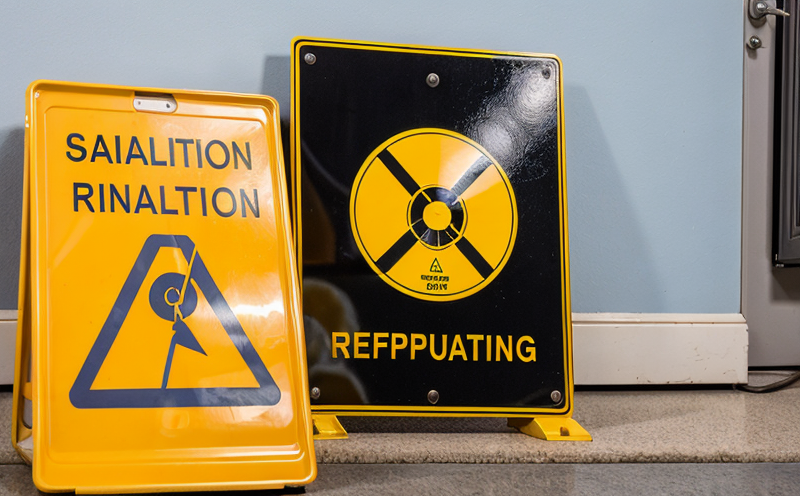ISO 4037-1 Reference Radiation Fields for Compliance Testing
The ISO 4037-1 standard provides a set of reference radiation fields intended to facilitate the testing and evaluation of protective clothing, equipment, and materials used in environments where ionizing radiation exposure is a concern. This service ensures that manufacturers and users can demonstrate compliance with national or international standards regarding protection against ionizing radiation.
The standard defines specific reference fields for gamma radiation (e.g., Co-60), X-radiation, beta particles, and others. These reference fields are used in laboratory settings to simulate real-world conditions accurately. The testing process involves exposing the material or equipment under these defined reference fields and measuring the level of protection provided.
Compliance with ISO 4037-1 is crucial for industries such as healthcare, nuclear power plants, and research facilities where exposure to ionizing radiation can pose significant risks. By using this standard, organizations can ensure that their protective measures are effective in reducing the risk of accidental exposure.
The testing process typically involves several steps:
- Identification of the type and intensity of radiation that will be encountered in the field.
- Setting up a laboratory environment that simulates this field as closely as possible.
- Exposure of the material or equipment to the reference radiation fields under controlled conditions.
- Measurement of radiation levels and assessment of protective performance.
The results of these tests are then used to determine whether the product meets the specified safety criteria. This process is essential for ensuring that products perform reliably in real-world situations, thereby protecting workers from unnecessary exposure.
Scope and Methodology
The ISO 4037-1 standard specifies the reference fields and methods to be used for compliance testing of protective clothing and equipment. The scope includes:
- Reference fields for gamma radiation (e.g., Co-60).
- Reference fields for X-radiation.
- Reference fields for beta particles.
The methodology involves setting up a test chamber that can generate the specified reference fields. The equipment used includes:
- Cobalt-60 source for gamma radiation.
- X-ray generator for X-radiation.
- Beta particle emitter.
The testing process involves exposing the material or equipment to these reference fields and measuring the dose rate on both sides of the material. The difference between the external and internal dose rates provides a measure of the protective performance of the material.
Industry Applications
- Healthcare: Hospitals, clinics, and other healthcare facilities where staff may be exposed to ionizing radiation during diagnostic procedures or treatment.
- Nuclear Power Plants: Operators of nuclear power plants need to ensure that their workers are protected from the high levels of ionizing radiation present in these environments.
- Radiation Treatment Centers: Facilities where patients undergo radiation therapy require protective equipment for both staff and patients.
- Research Laboratories: Scientists working with radioactive materials need to ensure that their personal protective equipment is effective.
International Acceptance and Recognition
The ISO 4037-1 standard has gained widespread acceptance in the international community, with many countries adopting it as a national standard. It is recognized by regulatory bodies worldwide for its accuracy and reliability.
- European Union: The EU has incorporated this standard into its framework for radiation protection.
- United States: The U.S. Nuclear Regulatory Commission (NRC) recommends compliance with ISO 4037-1 for certain applications.
- Australia: The Australian Radiation Protection and Nuclear Safety Agency (ARPANSA) endorses the use of this standard.





